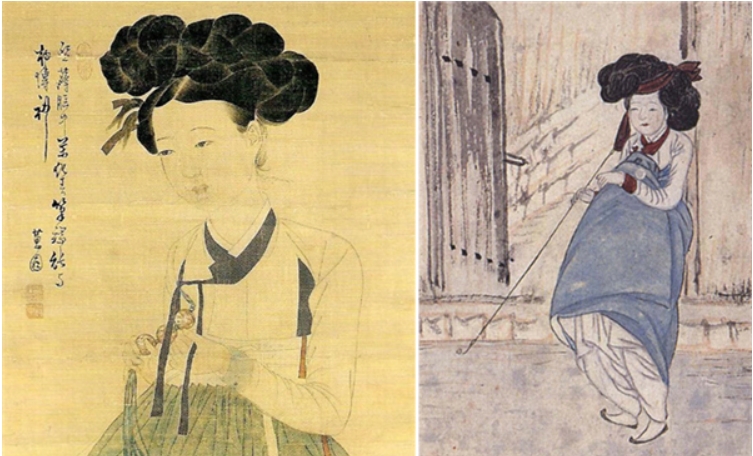
Step into the opulent, yet often tumultuous, world of Joseon Dynasty Korea, and you’ll encounter a fascinating cast of characters. Among them, few captivate the imagination quite like Jang Nok-su (장녹수). More than just a concubine, she was a figure of immense power and intrigue, whose story intertwines with one of Joseon’s most controversial monarchs, King Yeonsangun.
Jang Nok-su was a famous gisaeng during the Joseon Dynasty. Gisaeng were highly trained courtesans who excelled in music, dance, and poetry.
Who Was Jang Nok-su? A Rise from Humble Beginnings
Jang Nok-su’s journey began far from the royal palace. Born into a lower-class family, she initially worked as a gisaeng (기생), a highly skilled courtesan trained in music, dance, and poetry. This background, often looked down upon in Joseon’s rigid class system, makes her eventual ascent to the heart of the royal court all the more extraordinary.
Her true power lay not just in her beauty, but in her exceptional talents. She was renowned for her captivating voice, enchanting dance, and quick wit. It was these qualities that caught the eye of King Yeonsangun, a ruler known for his artistic inclinations and, later, his erratic and tyrannical behavior.
The King’s Obsession: A Tale of Power and Influence
Yeonsangun’s infatuation with Jang Nok-su quickly grew into an obsession. She became his most favored concubine, wielding unprecedented influence over the king and, by extension, the affairs of the nation. Historical records suggest that Yeonsangun was utterly devoted to her, showering her with lavish gifts and granting her extraordinary privileges. She was even allowed to wear robes typically reserved for royalty, a stark defiance of court protocols.
This period of her life is filled with intriguing anecdotes. One often-cited story describes how Yeonsangun would personally carry Jang Nok-su on his back, playfully calling her his “human palanquin.” This seemingly trivial act highlights the extent of his devotion and her unique position within the palace.
Beyond the Lure: Was She a Schemer or a Survivor?
Jang Nok-su’s influence wasn’t always seen in a positive light. Many historians and contemporary officials viewed her as a manipulative figure who encouraged Yeonsangun’s excesses and contributed to his downfall. She was accused of accumulating vast wealth, accepting bribes, and interfering in state affairs.
However, another perspective suggests she was a shrewd survivor in a ruthless court environment. Given her humble origins, her rise to power was a testament to her intelligence and adaptability. Perhaps she simply made the most of the opportunities presented to her, navigating the dangerous waters of royal politics with cunning and charm.
The Tragic End: A Symbol of a King’s Downfall
Ultimately, Jang Nok-su’s fate was inextricably linked to that of King Yeonsangun. As the king’s tyranny escalated, eventually leading to a coup known as the Jungjong Coup in 1506, Jang Nok-su became a symbol of his misrule. She was arrested and executed, her life ending as dramatically as it began. Her story serves as a poignant reminder of the volatile nature of power and the consequences of unchecked royal authority during the Joseon era.
Jang Nok-su remains a complex and enigmatic figure in Korean history. Was she a villain who exploited a king’s weaknesses, or a clever woman who simply survived and thrived in an unforgiving world? Her tale continues to spark debate and fascination, making her one of Joseon’s most enduring and intriguing personalities.